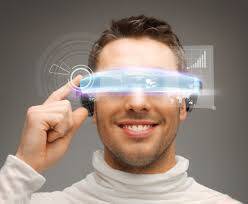

It is quite difficult to accurately assess when these predictions will materialize. Some of them will see the light of the day in 2014 but many might take until 2020 to fully mature.
Wearable Devices and Big Data
Take the case of wearable devices. There is no question that mobile phones, tablets and smart watches will become pervasive over the next 5 years. According to Business Insider, the market for wearables could reach $12B in 2018 and theses devices have a strong potential for changing our habits all together.
The only issue is how quickly we will adopt them and in turn get clear value from them. Pioneers like Robert Scoble have made a great case for the opportunity but also have provided a down to earth perspective for the rest of us (his recent article on “Why Google Glass is doomed” is a gem).
So, I predict that, while the tipping point for such technologies might be 2014, but the true disruption might not happen before 2020. Why? Definitions and Center of Design.
For starters, the definition of a “wearable device” is still very loose. I’m a big fan of devices like the Jawbone UP, the Fitbit and the Basis watch. In fact, I’ve built an analytical system that allows me to visualize my goals, measure and predict my progress already. My “smart devices” collect information I couldn’t easily understand before and offer the opportunity to know more about myself. Big Data growth will primarily come from these types of smart devices.
The wearables that are still confusing are the so-called “smart-watches”. Theses watches, in my opinion, suffer from a “Center of Design” Dilemna.
Let me explain: the technology industry is famous for wanting new technologies to sunset old ones. When Marc Benioff introduced Chatter, he said it would obliterate email. When PC shipments went down, the industry rushed to talk about the “Post-PC” era. Have any of these two trends fully materialized yet?!
The answer is unfortunately not simple. Smart watches, phones, tablets and PC all have a distinct use cases, just like email and social apps. Expecting that one technology would completely overlap the other one would be disregarding what I call a product’s “center of design”. The expression refers to the idea that a particular technology can be stretched for many uses but that it is particularly relevant for a set of defined use cases. Let’s take the example of the phone, tablet and PC:
- A phone is best used for quickly checking texts, browsing emails, calendar invites…and of course making phone calls (duh!)
- A tablet is best used for reading and browsing websites, documents, books and emails. Typing for 12 hours and creating content is possible but it’s not a tablet’s center of design…
- A PC or a Macbook are best for creating content for many hours. They might be best for typing, correcting and working on projects that require lots of editing.
When I see an ad like this on the freeway, I really question the value of an additional device. What can a watch in this case add, if the wrist that wears it, is also connected to a hand that holds a much more appropriate device?
Big Data from Wearables is a Predictive Insight for 2020 in my opinion, because I think that, by then, the broad public will have embraced them into use cases that truly add value to their lives.